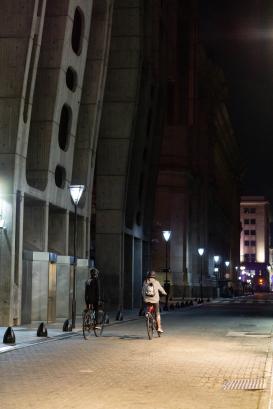
In recent days, there has again been a lot of public outrage after several reports about security problems in Brussels and after the tragic murder of 17-year-old Lisa in Amsterdam. But time and again, it remains the same reflex: anger, media attention, hashtags, and then... nothing.
In an opinion piece that appeared today in De Standaard, BRISPO/TOR researcher Petrus te Braak calls for looking beyond incidents. Safety is not only about crime, but also and above all about how safe people feel in their daily environment. These feelings are not an afterthought: they determine which places we avoid, which routes we take, and how much freedom we really experience in public space.
The opinion piece is based on a recent literature study that Petrus conducted together with Theun Pieter van Tienoven as a part of the project 'The MOMENT of spatial justice: Mapping Gendered Perceived Safety in Brussels’ Public Spaces'. This study shows that feelings of safety are structurally influenced by four major factors:
- Time (time of day, week, season)
- Spatial characteristics (such as layout, lighting, crowds)
- Social environment (who is in the room, how people behave)
- Personal characteristics (such as age, gender, health or previous experiences)
The opinion piece argues for a more data-driven and preventive approach to urban safety:
"As long as we continue to define safety as 'something that only counts when things go wrong,' we will continue to react too late."
The full text can be read in De Standaard through this link.
More information about the literature study is available here.
,More information about the ongoing investigation in Brussels: moment.brussels
